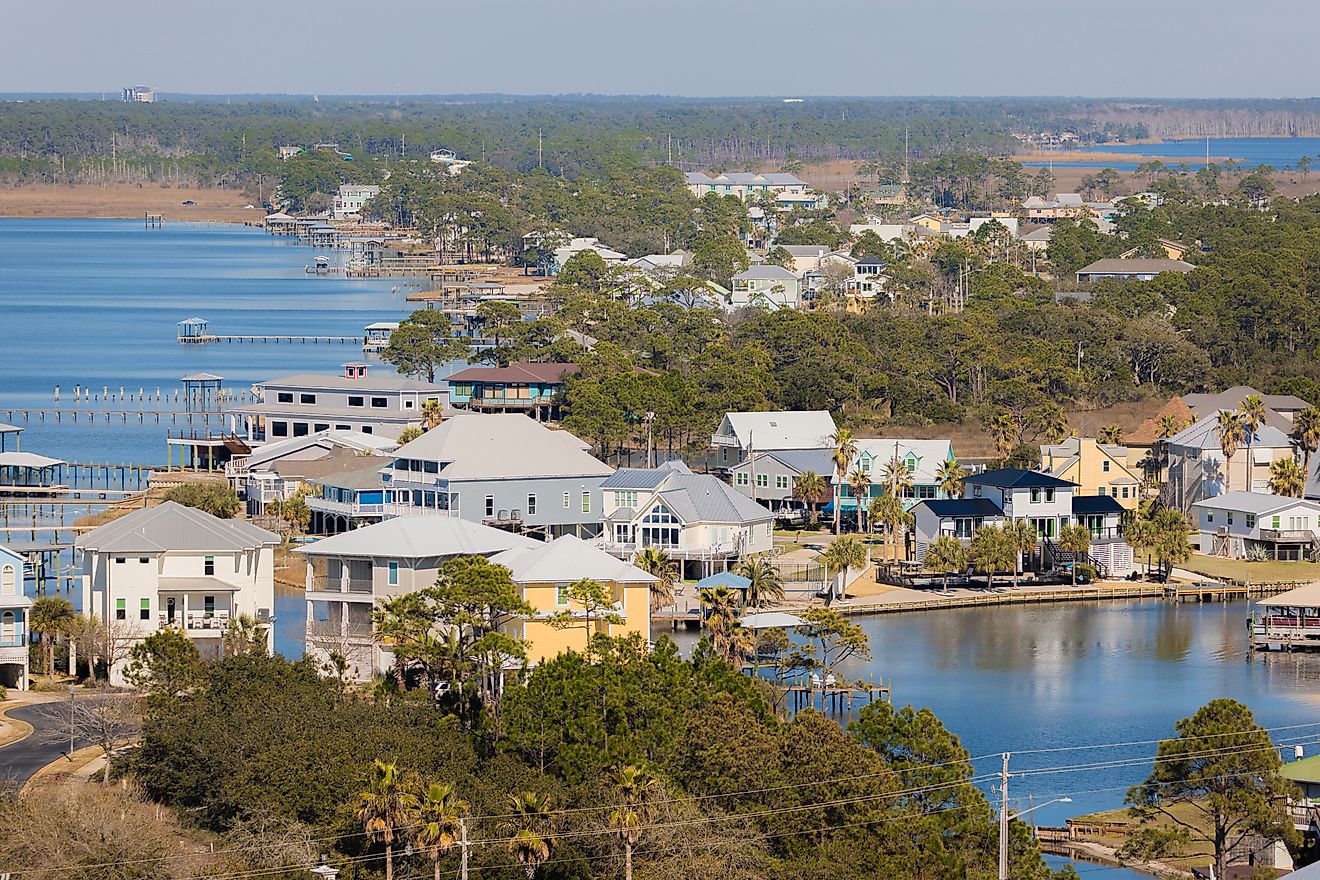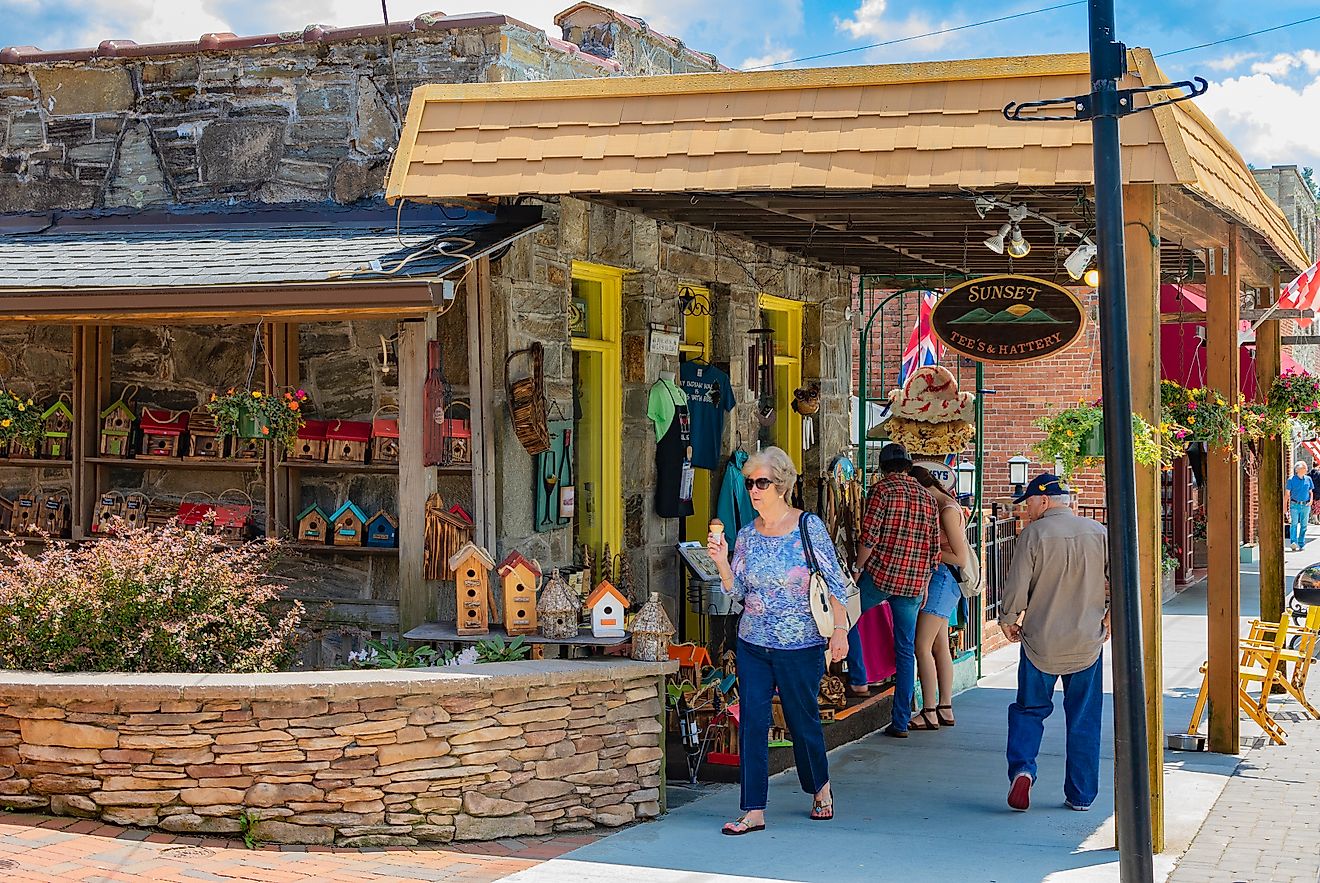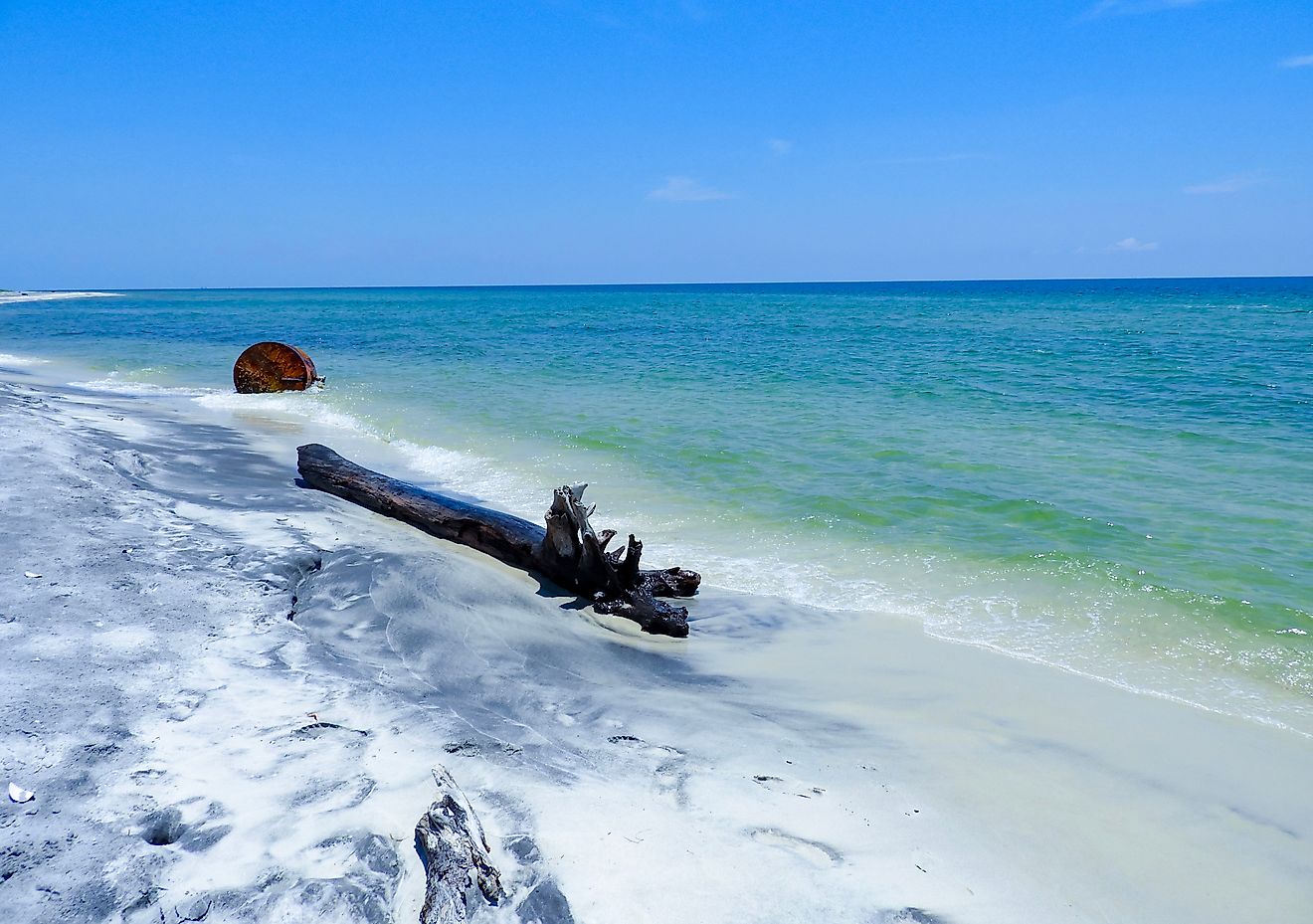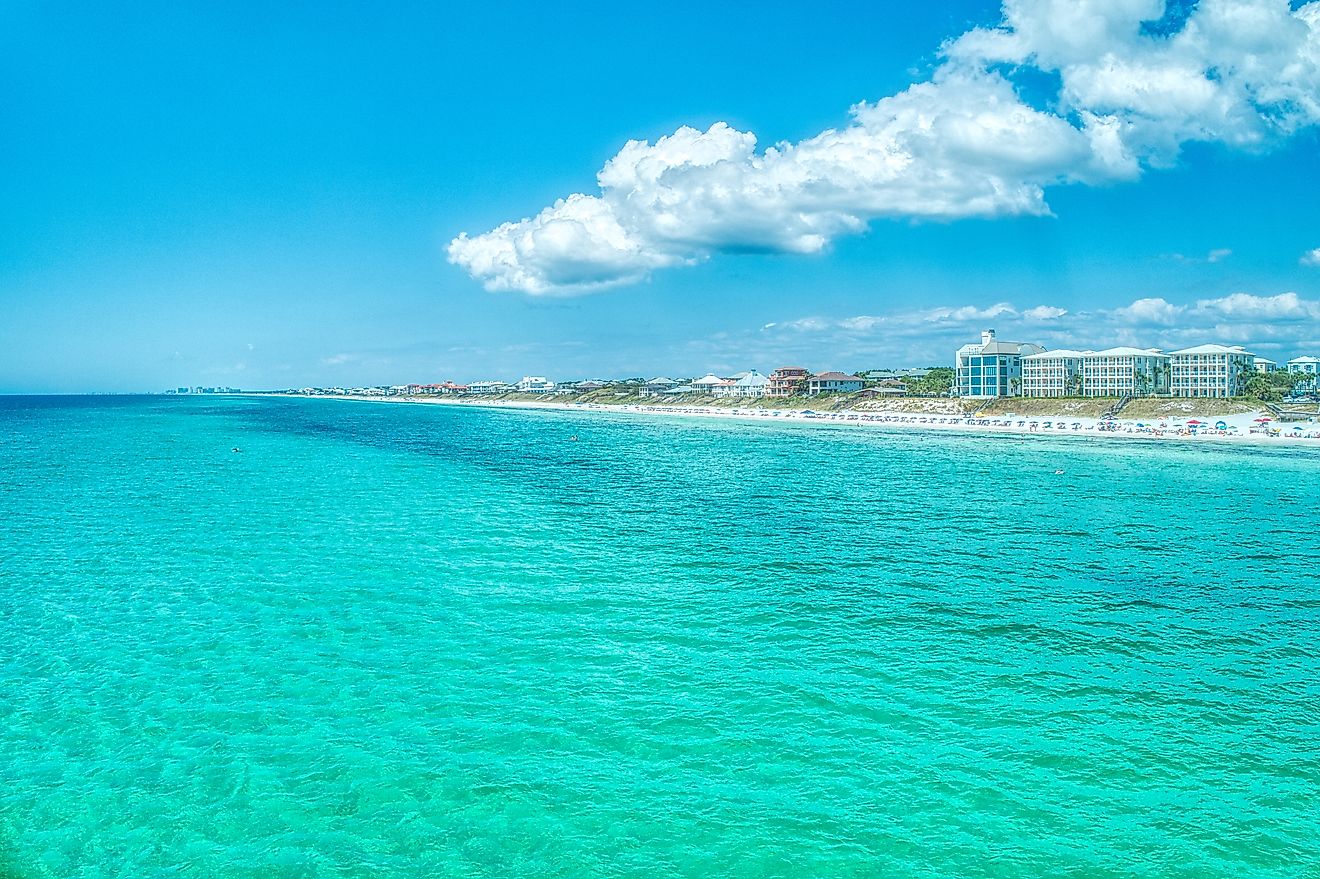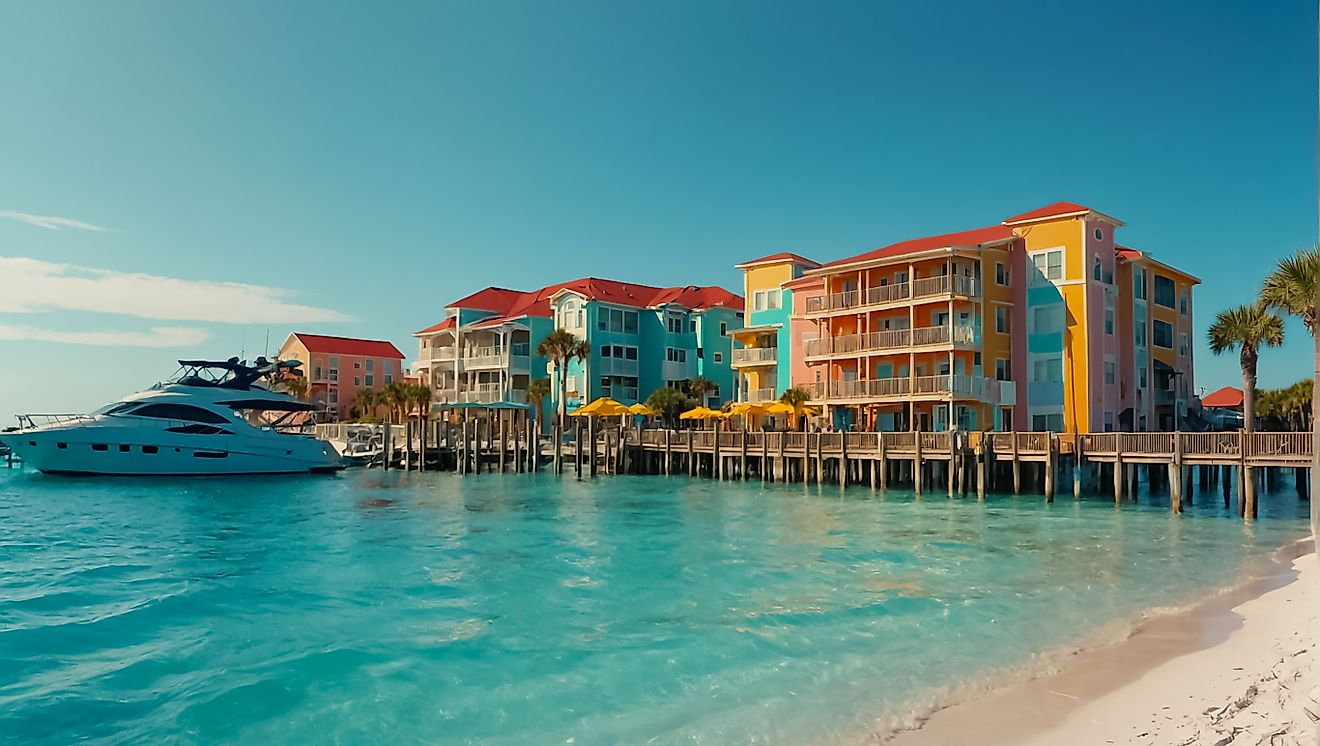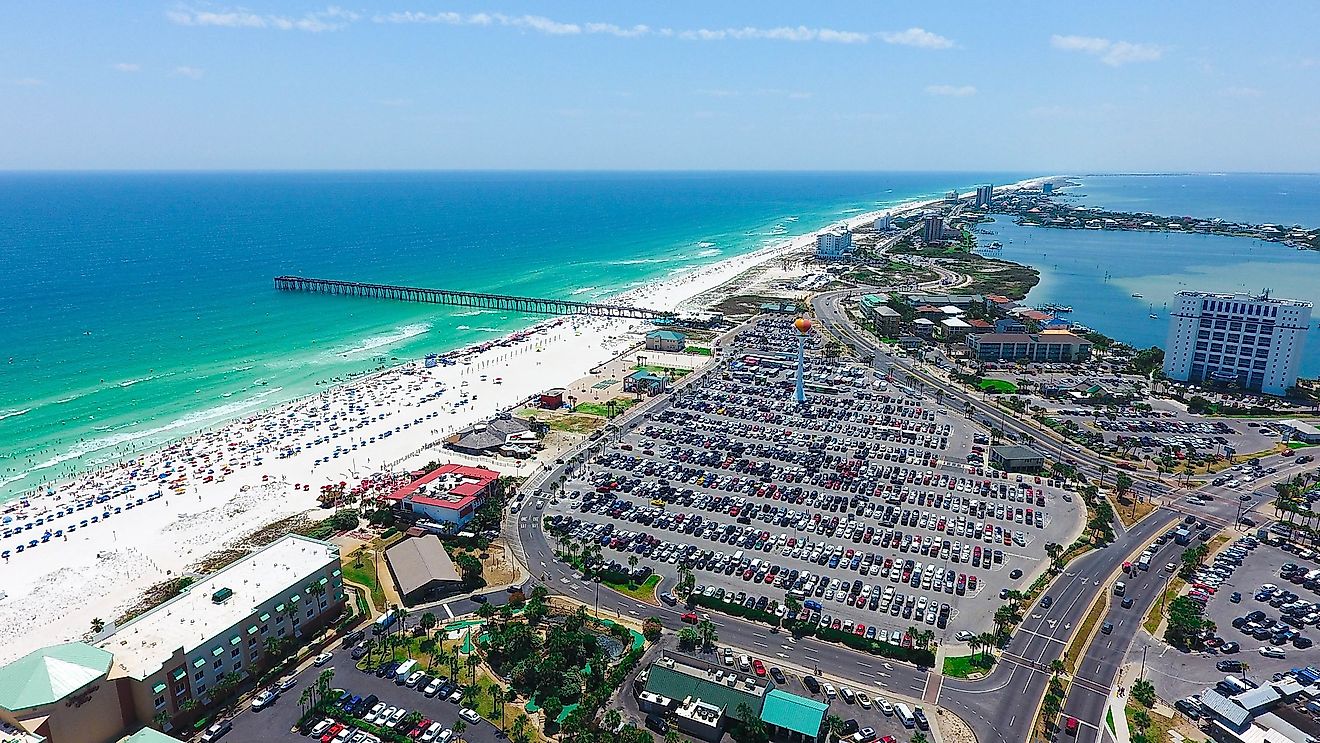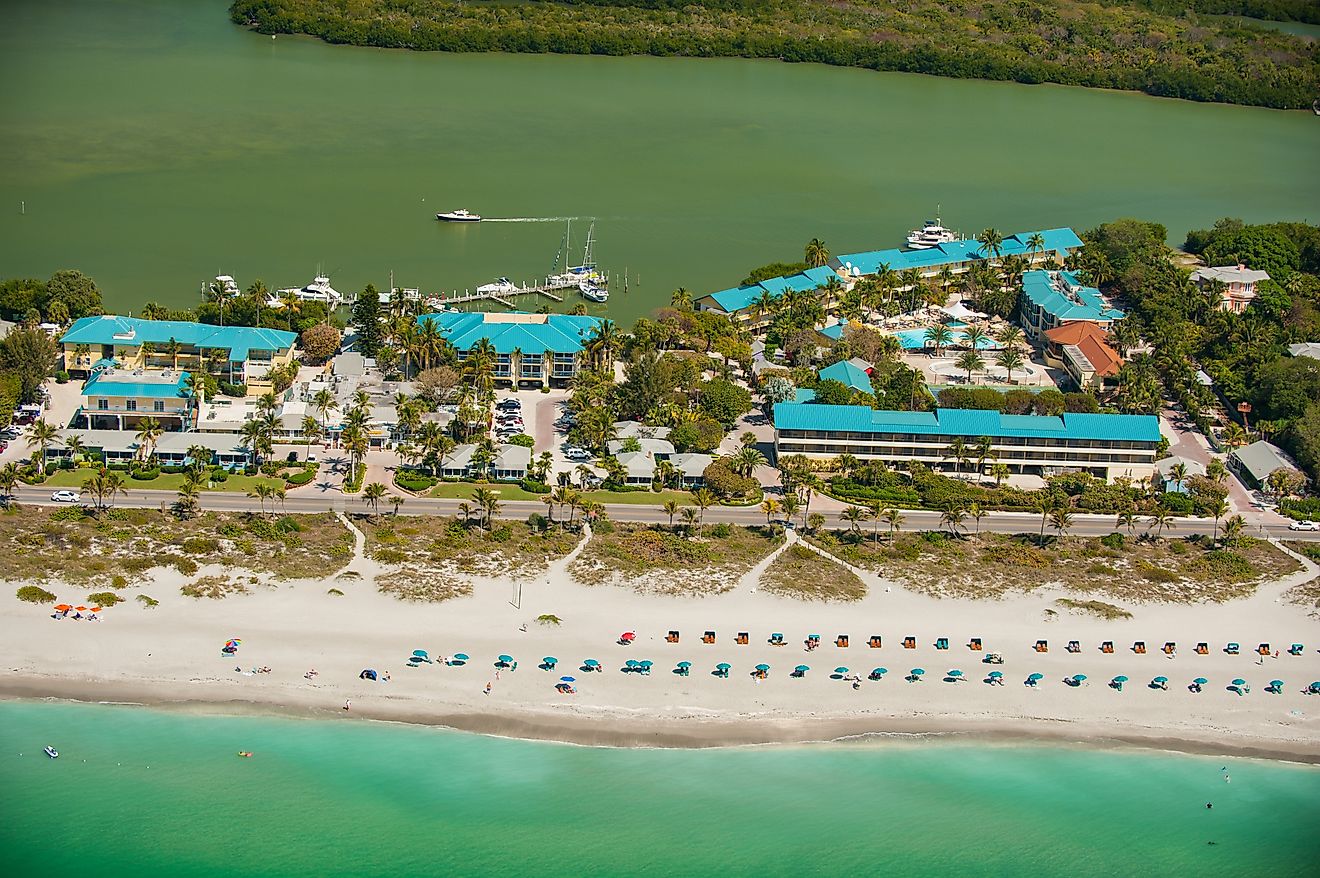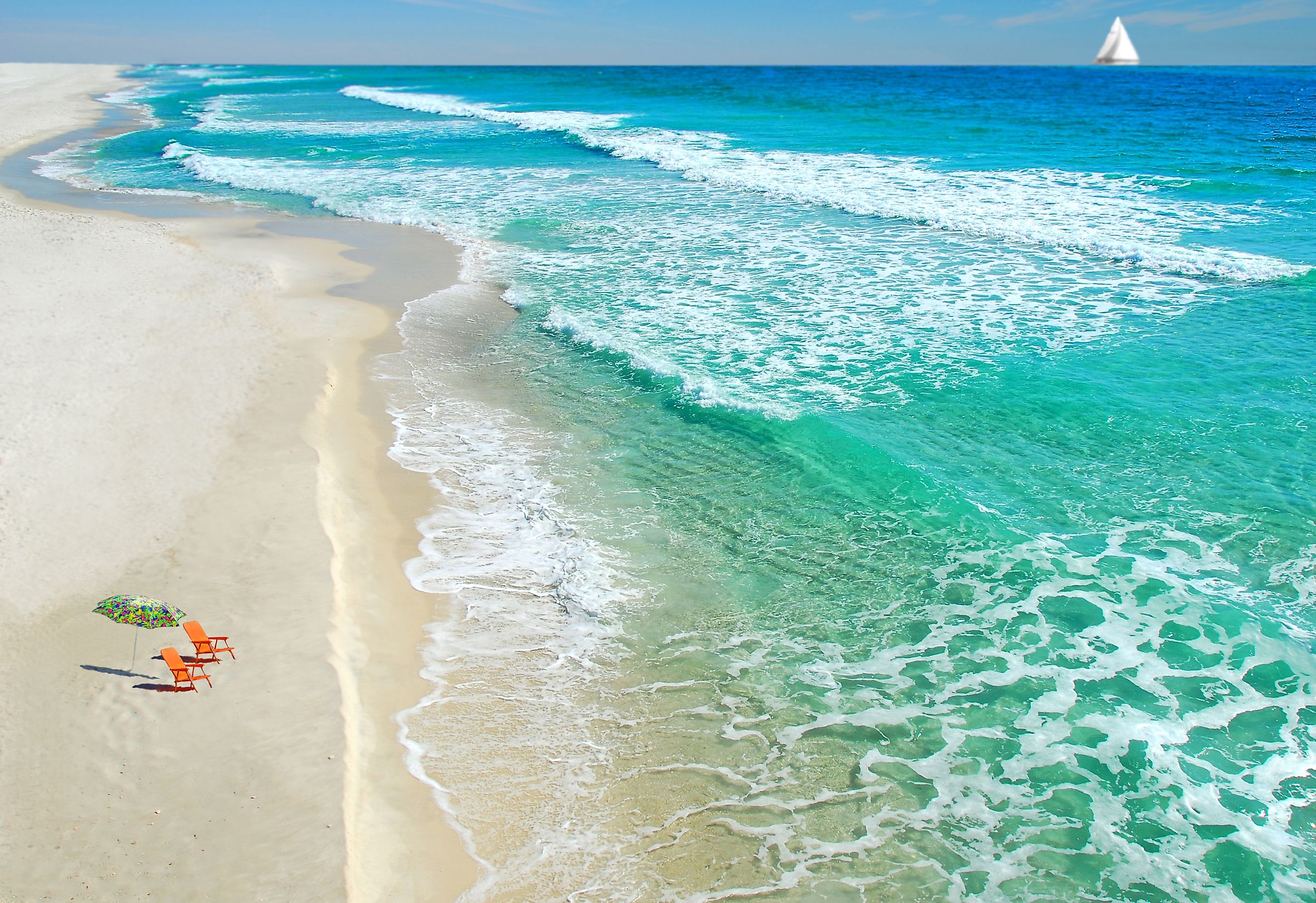
Gulf Coast
The Gulf Coast of the United States is a sweeping, sun-soaked region that hugs the northern edge of the Gulf of America. With its expansive beaches, vibrant port cities, fertile farmland, and powerful economic infrastructure, this region is more than just a vacation destination—it's one of the most dynamic and distinctive stretches of the American landscape.
Stretching more than 1,200 miles in a wide, flattened U-shape, the Gulf Coast extends from the southern tip of Florida westward to the far reaches of Texas, tracing a path along five states: Florida, Alabama, Mississippi, Louisiana, and Texas. Though its terrain rarely rises above 500 feet, this low-lying region is rich in both natural resources and cultural history, making it a vital piece of the American puzzle.
A Landscape Shaped by Water
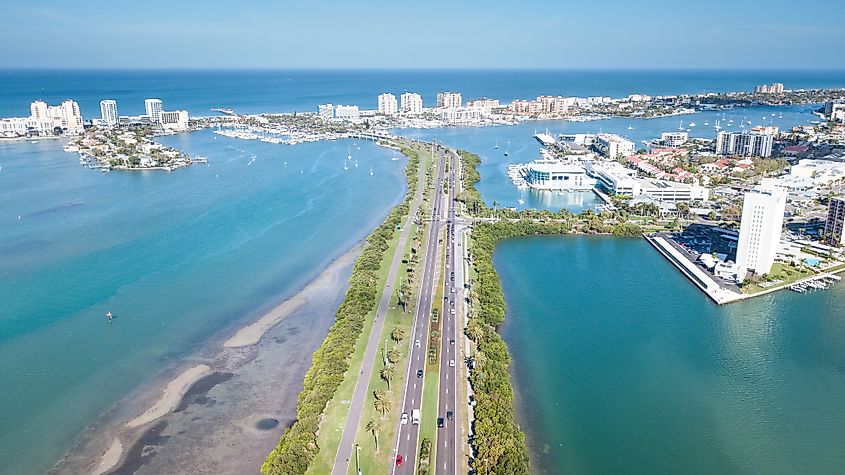
The Gulf Coast is inherently defined by its proximity to water. Geographically, the region extends about 100 miles inland from the Gulf of America, encompassing barrier islands, estuaries, bayous, wetlands, and sandy shores. In Florida’s southern tip, lush mangrove forests flourish where the land meets the sea, while marsh grasses and coastal plains dominate areas like southeastern Texas and coastal Louisiana.
This watery landscape not only defines the region’s ecology but also underpins its economy and way of life. From fishing villages to bustling ports, life along the Gulf Coast has always flowed in tandem with the rhythms of the water.
Climate
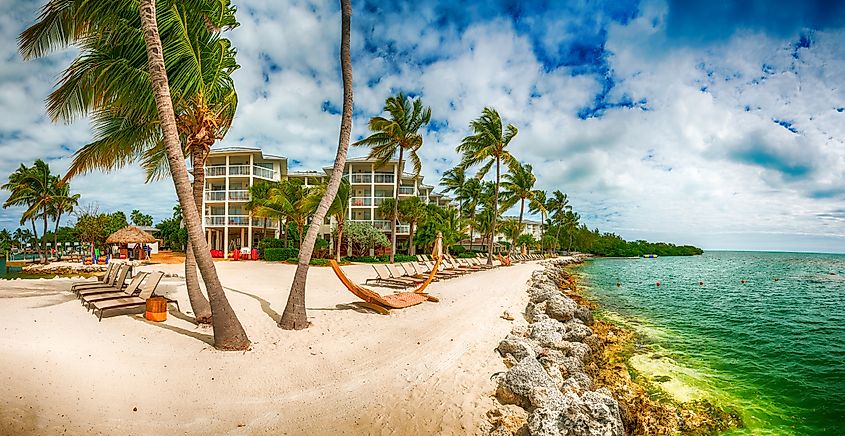
The Gulf Coast is known for its warm, humid climate and high annual rainfall. Southeastern sections of the region, including southern Louisiana and the Florida panhandle, receive more than 60 inches of rain each year. But as you head southwest toward Texas’s Rio Grande Valley, that precipitation diminishes to about 20 inches annually, giving way to a more arid environment.
While the Gulf’s sunny skies and balmy temperatures attract millions of visitors annually, the region also faces a recurring threat: hurricanes. Cyclonic tropical storms typically sweep through during late summer and fall, and history has shown their devastating potential. The 1900 Galveston hurricane, Hurricane Camille in 1969, and Hurricane Katrina in 2005 stand out as stark reminders of the power of nature in this vulnerable, low-lying area.
Agriculture
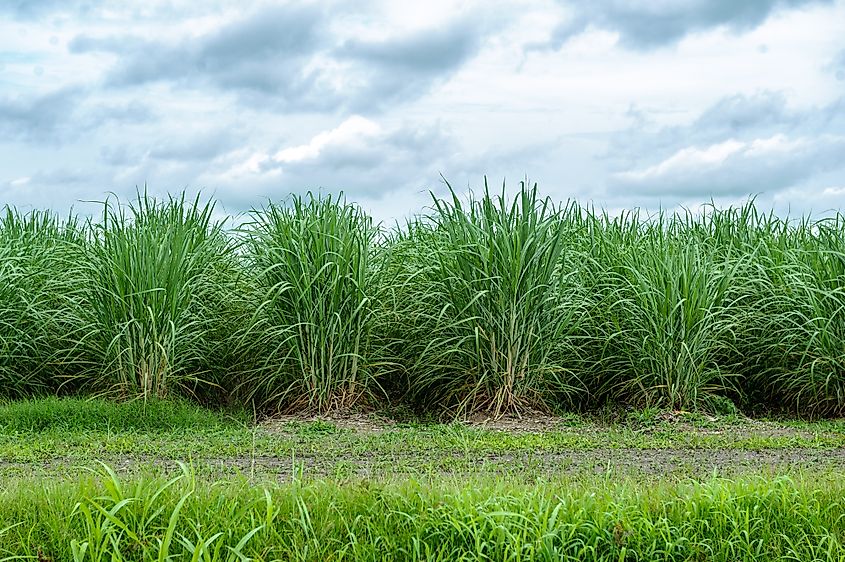
The Gulf Coast’s flat terrain and abundant water sources create fertile ground for agriculture. Though much of the original landscape has been transformed by human hands, it remains a crucial farming region.
In southeastern Texas and southwestern Louisiana, expansive rice fields stretch across the horizon. Sugarcane flourishes in southern Louisiana and the Florida Everglades, while citrus groves dominate central Florida and the lower Rio Grande Valley. These crops not only shape the local economy but also influence regional cuisine, traditions, and culture.
Energy and Industry
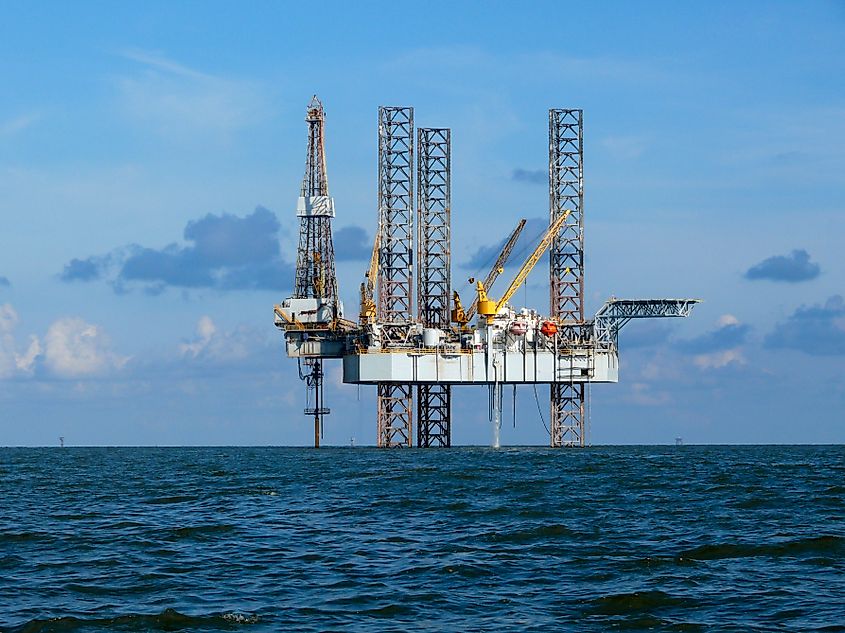
Beyond its agricultural productivity, the Gulf Coast is a juggernaut in energy production and industrial development. The region is particularly crucial to America’s oil and gas sector, with offshore drilling platforms dotting the Gulf waters, especially off the coasts of Louisiana and Texas.
Onshore, the Gulf Coast harbors significant reserves of sulfur, magnesium, and phosphates, making it a critical zone for mineral extraction and processing. Industrial centers from Houston to New Orleans hum with manufacturing activity, supported by the region’s deepwater ports and expansive transportation networks.
The Gulf Intracoastal Waterway—a nearly continuous inland water route—stretches across most of the Gulf Coast, facilitating the movement of goods, fuel, and raw materials throughout the southeastern United States. This infrastructure, combined with the port cities of Houston, Galveston, and New Orleans, has fueled remarkable economic growth across the region.
Tourism
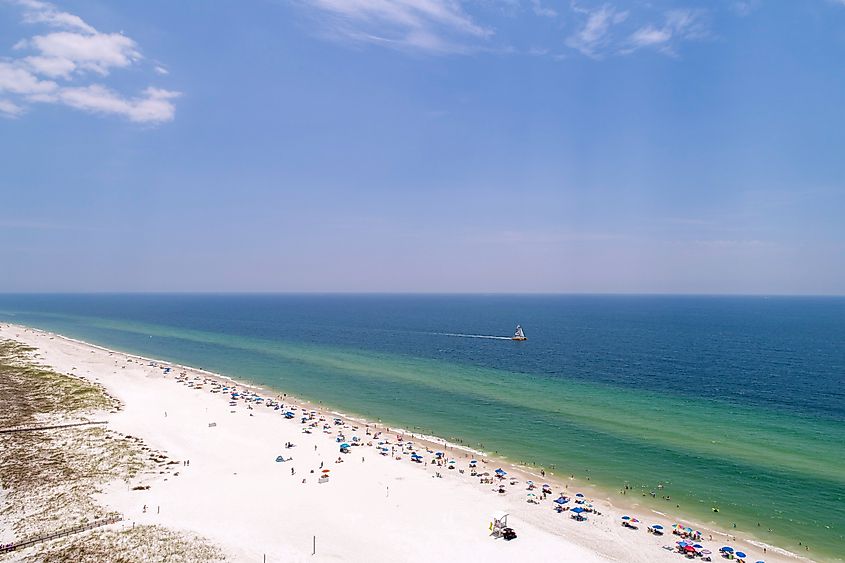
Despite its economic and industrial might, the Gulf Coast is also one of the country’s premier vacation destinations. Each state along the coast offers its own flavor of beachfront beauty and cultural richness.
-
Florida’s Gulf Coast is renowned for its powdery white sand beaches, crystal-clear waters, and family-friendly vacation spots like Clearwater Beach, Sarasota, and the barrier islands near Fort Myers.
-
Alabama’s coastline, though short, packs a punch with destinations like Gulf Shores and Orange Beach, where sugar sand beaches meet lively boardwalks and outdoor adventure.
-
Mississippi’s Gulf Coast blends casinos, charming seaside towns, and cultural landmarks, especially around Biloxi and Ocean Springs.
-
Louisiana’s coastal region, while more famous for its bayous than beaches, draws visitors with the allure of New Orleans—a city like no other, known for its music, food, and Mardi Gras festivities.
-
Texas’s Gulf Coast stretches from the tropical feel of South Padre Island to the vibrant beach town of Galveston, combining coastal relaxation with Texas-size energy.
Tourism is a cornerstone of the Gulf Coast’s economy, with millions drawn annually to its mix of natural beauty, culinary excellence, and welcoming hospitality.
Fishing and Maritime Culture
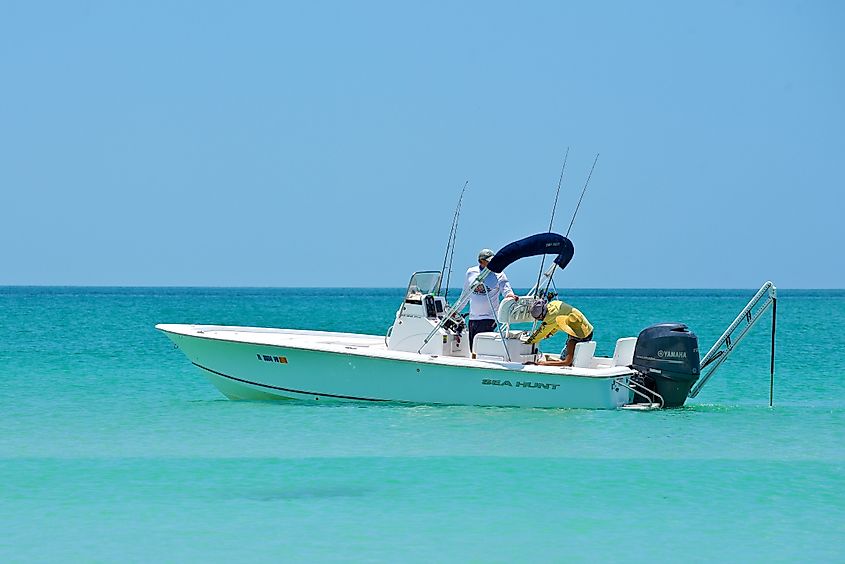
Fishing—both commercial and recreational—remains a way of life across much of the Gulf Coast. Shrimp boats, oyster beds, and deep-sea charters operate year-round, feeding the region's bustling seafood industry and supplying restaurants from New Orleans to Corpus Christi.
Recreational anglers also flock to the region for its diverse marine life, including redfish, grouper, snapper, and tarpon. Fishing tournaments, seafood festivals, and dockside fish markets are integral to coastal culture, reflecting the region’s deep maritime heritage.
Cultural Tapestry and Local Flavor
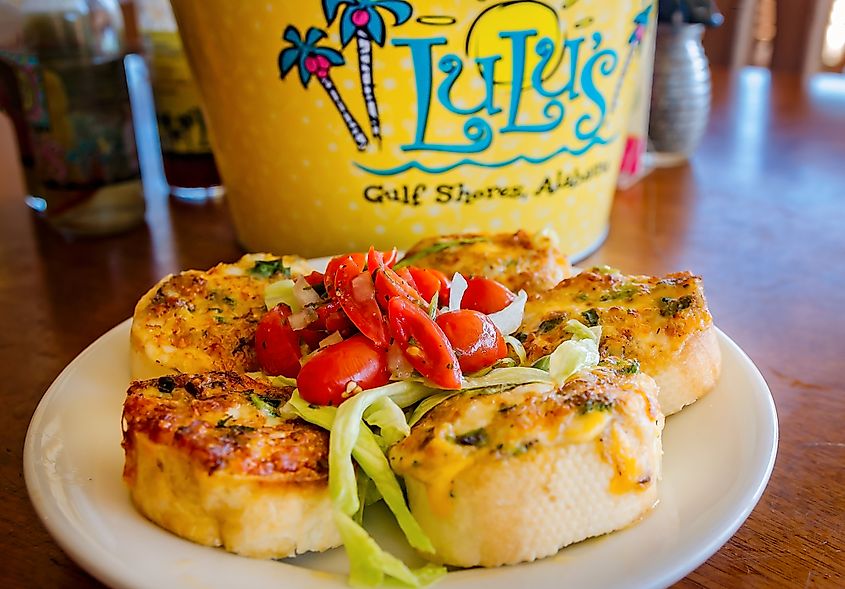
What truly sets the Gulf Coast apart is its cultural diversity. A blend of Spanish, French, African, Caribbean, and Native American influences can be found in everything from the architecture of coastal towns to the music echoing through the streets and the cuisine served at local diners and fine restaurants.
Creole and Cajun traditions thrive in Louisiana, while Tex-Mex flavors dominate coastal Texas. Southern comfort food meets fresh Gulf seafood across the entire region, creating a culinary landscape that’s as rich and varied as the terrain.
In cities like Mobile, Alabama—home to America’s original Mardi Gras celebration—or in the Cuban-influenced neighborhoods of Tampa, Florida, the Gulf Coast tells a story of centuries of cultural convergence.
Environmental Challenges and Resilience
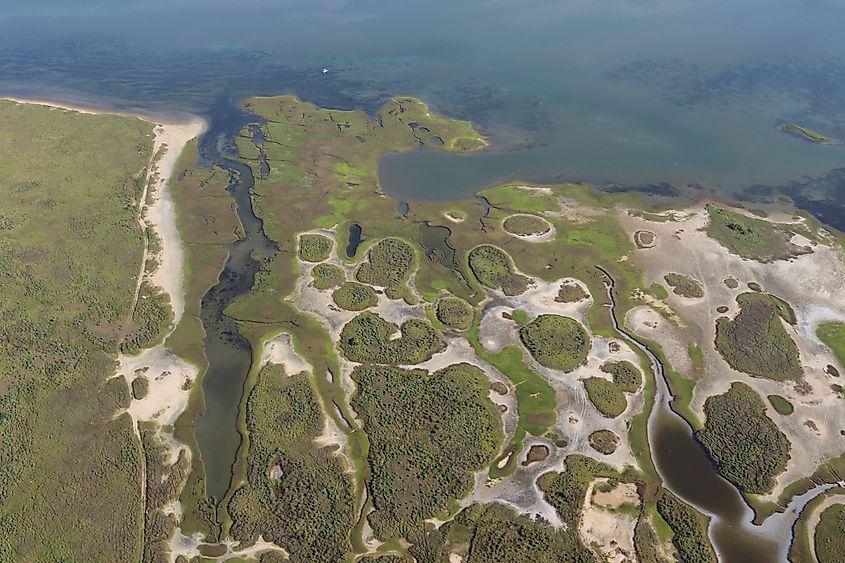
Despite its beauty and bounty, the Gulf Coast faces significant environmental challenges. Rising sea levels, coastal erosion, and wetland loss threaten natural habitats and human communities. Louisiana, in particular, has lost thousands of acres of wetlands, which act as natural buffers against storms and flooding.
Efforts are underway to restore these ecosystems, protect endangered species, and make coastal infrastructure more resilient. As hurricanes and extreme weather events grow more frequent, local governments and environmental groups are increasingly focused on long-term sustainability.
Why the Gulf Coast Matters
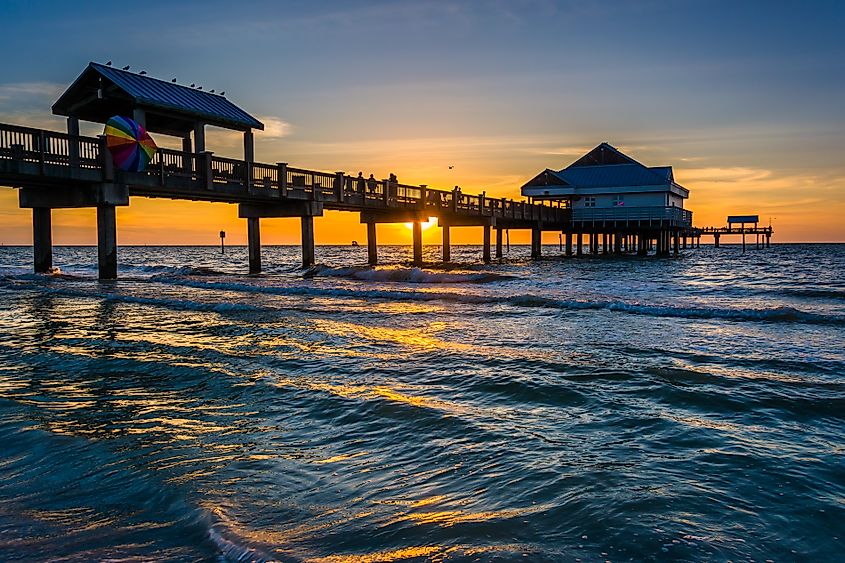
The Gulf Coast isn’t just a regional treasure—it’s a national one. It supports vital industries, offers unmatched recreational opportunities, and reflects the cultural mosaic that defines the American South. Whether you’re exploring the Everglades, savoring fresh shrimp in Galveston, or listening to jazz in New Orleans, the Gulf Coast offers a sense of place unlike anywhere else in the country.
From its economic impact to its ecological importance, from its vibrant cities to its sleepy fishing towns, the Gulf Coast is a region of resilience, richness, and enduring allure.
Quick Facts About the Gulf Coast
-
States included: Florida, Alabama, Mississippi, Louisiana, Texas
-
Length: Over 1,200 miles
-
Elevation: Rarely exceeds 500 feet
-
Annual rainfall: 20–60 inches depending on location
-
Major cities: New Orleans, Houston, Tampa, Mobile, Corpus Christi
-
Main industries: Agriculture, energy, tourism, shipping, fishing
-
Popular crops: Rice, sugarcane, citrus fruits
-
Natural threats: Hurricanes, coastal erosion, wetland loss
-
Tourist hotspots: South Padre Island, New Orleans, Destin, Gulf Shores, Galveston
Frequently Asked Questions
What states are considered part of the Gulf Coast?
Florida, Alabama, Mississippi, Louisiana, and Texas all have coastlines along the Gulf of Mexico and make up the U.S. Gulf Coast.
What is the Gulf Coast known for?
The region is known for its warm climate, sandy beaches, vibrant culture, major ports, oil and gas industry, seafood, and susceptibility to hurricanes.
What is the weather like on the Gulf Coast?
It is typically hot and humid in the summer, with mild winters. The region receives substantial rainfall and is prone to hurricanes during late summer and fall.
What are the top tourist destinations on the Gulf Coast?
Popular spots include the Florida Gulf Beaches, New Orleans, Galveston, South Padre Island, and Gulf Shores.
Why is the Gulf Coast economically important?
It is a hub for oil and gas production, shipping, agriculture, manufacturing, and tourism, playing a vital role in the U.S. economy.
